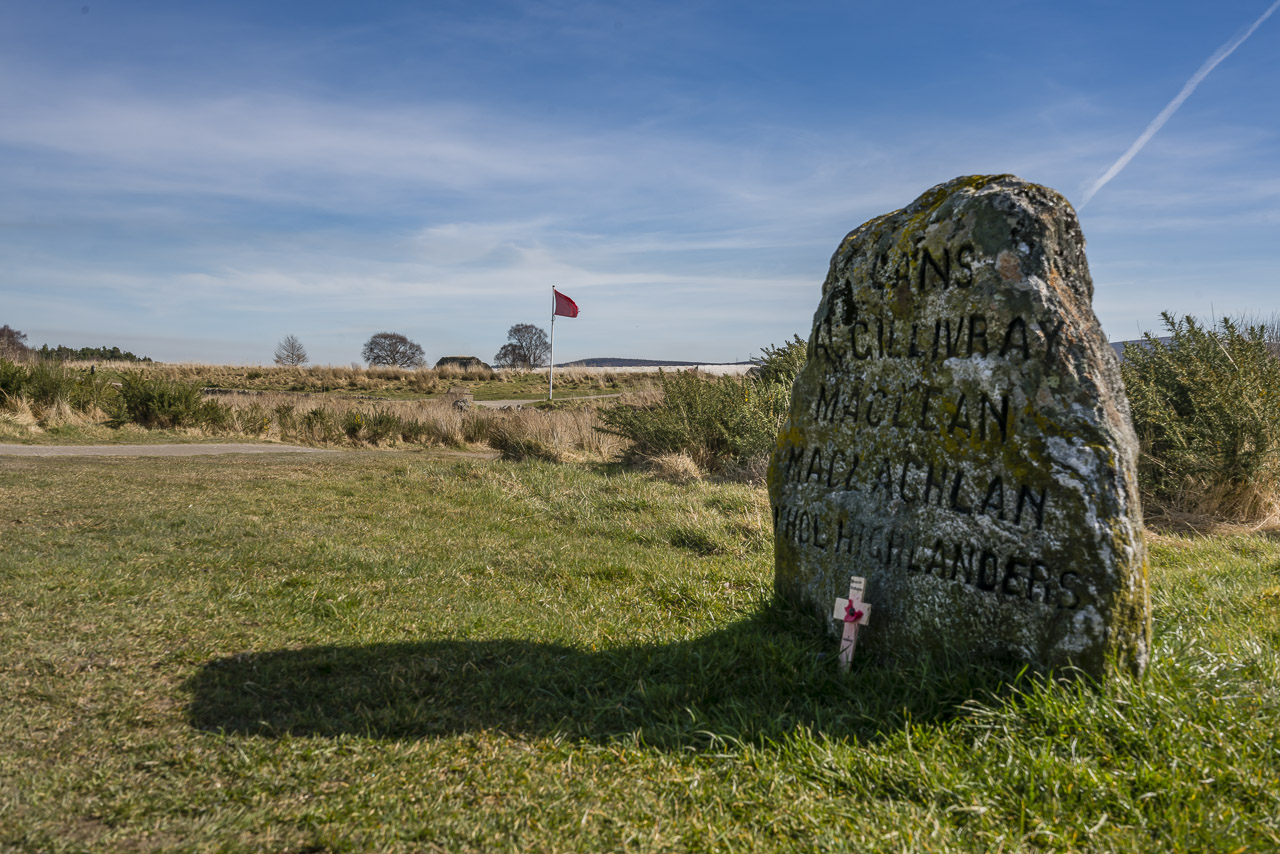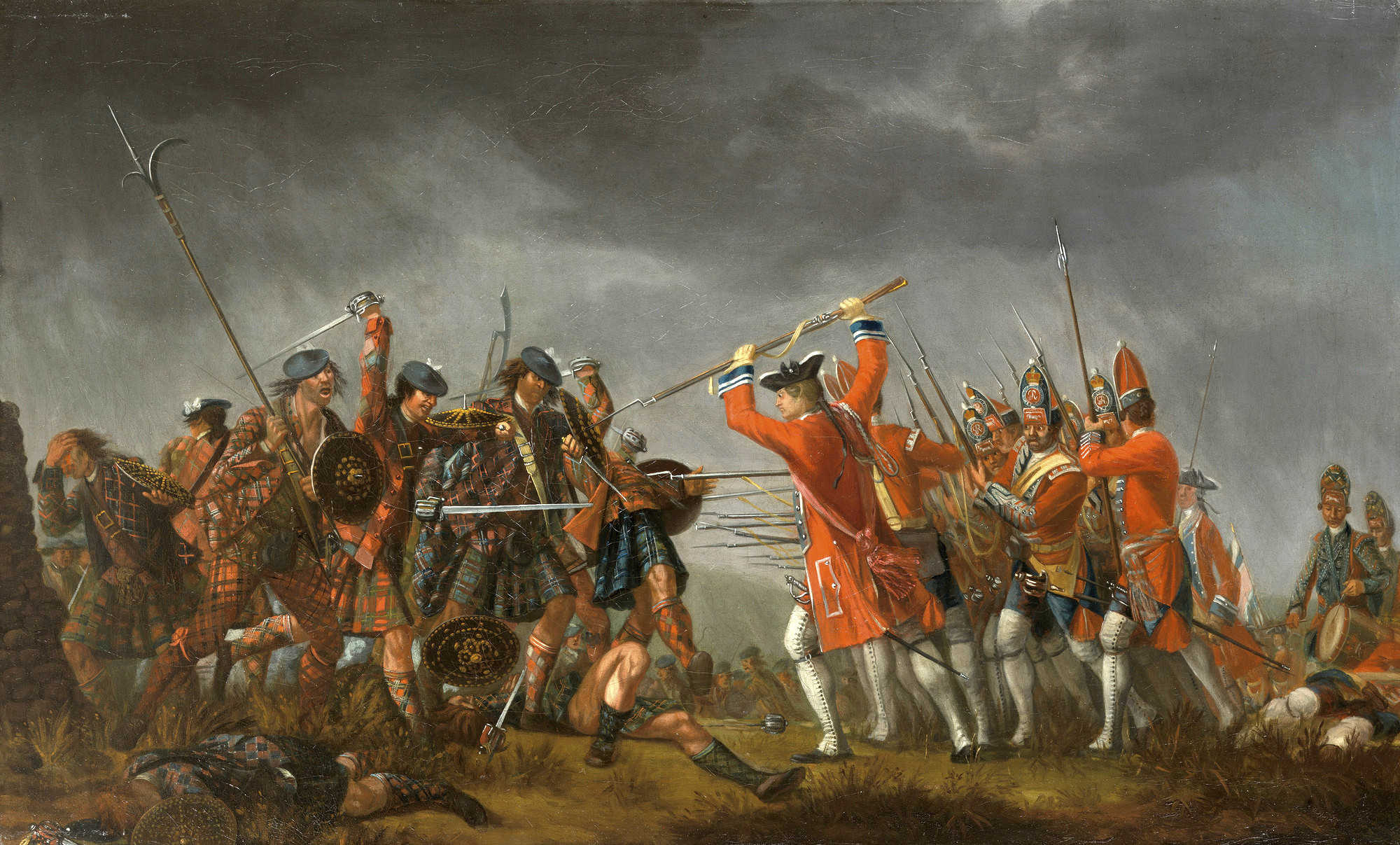Marking the spot of the last major battle on British soil, the wild moor at Culloden is the resting place of 1,500 Jacobite and 50 Government soldiers who fought and died here in 1746. Today, you can walk along the battle lines and see the graves of the soldiers beside the memorial cairn in the centre of the battlefield
The battlefield is a powerfully emotive place and the National Trust for Scotland has cared for Culloden Moor since 1937. Next to the battlefield is the richly researched, stimulating and sensitive Culloden Visitor Centre, which features artefacts from both sides of the battle and interactive displays that reveal the background to the conflict. It is both a monument and a guide to a pivotal day in history.
But the field of battle and the views that surround it are increasingly under threat from development, and we must work harder each day to protect its sense of place.
Action is needed now.
The site cared for by the National Trust for Scotland covers only a third of the actual battleground. It sits within a cultural landscape which is owned by many different people and private organisations. Its the field of battle itself and the views that surround the site that give it a sense of place.
Over the past 10 years, Inverness has become one of the fastest growing cities in Europe, putting agricultural land in the Culloden area under increasing pressure from development. The integrity of the whole site is currently under threat from piecemeal decision-making, unclear guidance and a lack of focused resource. Without integrated planning, stronger support and a holistic response to the problem, its likely that the cultural landscape surrounding the battlefield will be lost.
Over the past few months, weve opposed multiple planning applications, including a proposal right beside the battlefield to convert Treetops equestrian centre into a leisure resort with 13 lodges, restaurant and shop. We welcomed the Highland Councils decision to deny planning permission, resulting in the protection of the wider historic battlefield.
Action is needed now because the number of planning applications is likely to increase. A donation to Cullodens Fighting Fund will help us work towards a collaborative approach to managing the battlefield and protecting the site for future generations.
As well as protecting the battlefield from developers, we also work hard to keep the landscape looking like it did at the time of the battle. It is a challenge native tree growth keeps wanting to take over and turn the boggy Highland moor into a woodland. Were committed to managing this in a sustainable way through conservation grazing and manual, non-chemical clearance.
Alongside our hard-working human estates team, we also have a hard-working team of conservation grazers, made up of two Highland cows, 12 Shetland cattle, two Highland ponies and a herd of British primitive goats. Our grazers keep the tree growth down by munching the scrub on the moor. Our Highland ponies Rosie and Glen are currently in training to do walking tours on the battlefield, helping us to tell visitors about the pivotal role of horses and cavalry in the battle. The goats act as a hit squad theyre effective at decimating tall scrub and we move them where the need is greatest!
Protecting the moor is not only essential from a historical viewpoint. The unique landscape of Culloden is also home to a rich variety of wildlife, including skylarks (who both live and breed on the battlefield) and garden tiger moth caterpillars these have been in decline since the 1970s but have found a space at Culloden.
By preserving and protecting this amazing place in a sustainable way, we will encourage the natural flora and fauna to flourish.
The course of British, European and world history was changed at Culloden on 16 April 1746. A ferocious war had come to Scotland, dividing families and setting clan against clan.
The Jacobites fought to restore the exiled James VIII as king and were led by Prince Charles Edward Stuart, Jamess son; George IIs government army (led by the Duke of Cumberland, Georges son) was equally determined to stop this happening.
In spring 1746, the Jacobite rising was in trouble. Despite victory at the Battle of Falkirk in January, the Jacobites had not capitalised on their success. Now Charles was heading to meet the Duke of Cumberlands troops in the Highlands, to prevent them from taking Inverness.
However, many Jacobite troops were still far from Inverness and were urgently summoned to join the Prince. Food and money were in short supply and the army was not at full force few commanders thought they could win a battle in this state. In contrast, Cumberland marched his troops from Aberdeen in good order.
Rather than risk a pitched battle in their weakened state, the Jacobites agreed on a final desperate plan: a surprise night attack. This could have been a brilliant strategy: sleeping Government troops would have been no match for the Jacobites. In reality, as the hungry and exhausted Jacobite column stumbled along in the dark, their progress was too slow and they had to turn back.
As dawn broke, battle was still not inevitable. Bitter arguments broke out between the senior commanders even the French envoy pleaded for the Prince to withdraw.
But the Prince was determined and took the decision to fight there and then.
The Prince preferred to fight where they stood, on the moor at Culloden. With Cumberlands army in sight, the pipers began to play and the tired army struggled into position. At around 1pm, the Jacobite artillery opened fire on government soldiers. The government responded with their own cannon, and the Battle of Culloden began.
Bombarded by cannon shot and mortar bombs, the Jacobite clans held back, waiting for the order to attack. When at last they moved forward, it was through driving rain, smoke, gunfire and grapeshot. Upon reaching the government lines, some fought ferociously; many others never reached their goal. This time the government troops were prepared for the dreaded Highland charge; under brutal gunfire and faced with deadly bayonets, the Jacobites were forced to retreat.
Hardly an hour had passed between the first shots and the final flight of the Princes army. Charles watched from safety as the Duke of Cumberland emerged victorious. Although a short battle by European standards, it was an exceptionally bloody one that changed life in the Highlands forever.




